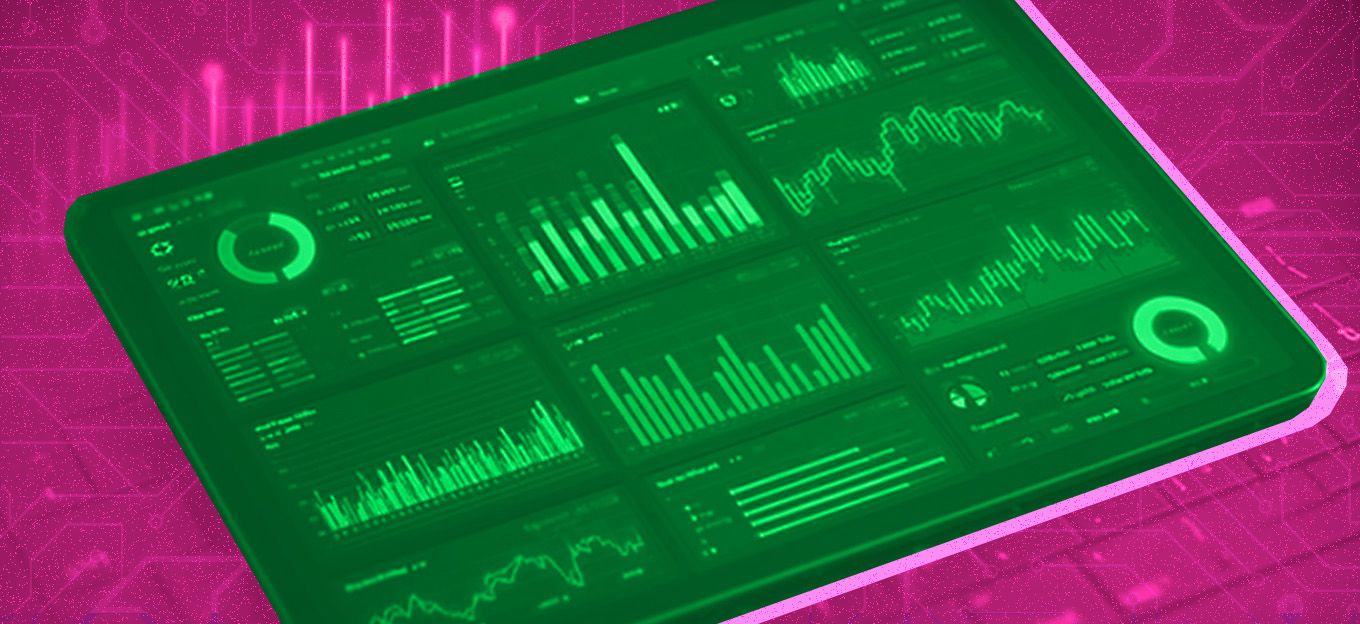3 IoT Analytics Goals From Which Your Business Can Benefit
3 IoT Analytics Goals From Which Your Business Can Benefit
- Last Updated: December 2, 2024
Michael Davies
- Last Updated: December 2, 2024



Are you a facilities manager or business owner thinking about ways to implement the Internet of Things? Let me stop you right there. If the answer is yes, your future project—whatever it may be—could very well be destined for failure, as 75 percent of IoT analytics projects before yours have done already. Why? Because one of the biggest mistakes companies make in regard to IoT implementation is approaching it without a specific business goal they’re striving to solve. IoT is only as good as the strategy behind it—so it pays to define your Applications right from the get-go. So let’s rewind and start again.
Are you a facilities manager or business owner looking to solve a specific business problem with the help of the IoT?
If the answer is yes, congratulations—you’re on the right track.
IoT Analytics: 3 Broad Business Goals (With Examples)
Despite the fact that having a clear business objective is so important to the success of an IoT data analytics project, many businesses come to us for help without a specific goal in mind. After we’ve worked through a company’s primary challenges together, the ultimate goal of the project usually falls into one of three broad buckets:
- To increase revenue.
- To reduce operating costs.
- To mitigate business risk.
Keep in mind these are broad goals. IoT devices themselves are fairly specific and collect specific types of data; your project goal should be equally specific to have the greatest chance of success. Below are some examples of goals that fall within these three buckets. Companies with a clear project scope like the ones outlined below are more likely to achieve their goals—and even venture into other IoT projects later that can help their businesses even more.
1. Increase Revenue
While increasing revenue isn’t as common as the other two goals, it does have increasing potential.
For instance, some companies are integrating IoT data analytics with their marketing automation platforms to create better user experiences. By tracking the load signature of customers using their products, they're able to discover patterns in usage. When's the energy intensity most pronounced? Those whose energy intensity is primarily in the morning and late afternoon might suggest retiree users. Others, whose peak energy profiles are late night into morning, might be another demographic. That IoT usage data, paired with demographic information, can help companies better segment their users and target them with specific promotions based on their habits and profiles.
For other companies, the ability to leverage data mined from IoT analytics can help create new business models. Some car manufacturers, for instance, meter the use of vehicles and charge customers based on usage. Or, aircraft engine manufacturers could adopt a model of charging airlines based on hours of operation with their engines, rather than having the airlines buy the engines outright. Having the ability to know and understand customer usage patterns could change the way businesses work and the way they interact with their customers.
Implementing an IoT project without a definitive business goal in mind doesn't work. Start by considering what's most important to your company: increasing revenue, reducing operating costs or mitigating risk.
2. Reduce Operating Costs
For many large companies, reducing operating costs is an ongoing challenge; it’s also the main driver of most enterprise IoT projects. Energy is a major operating expense, particularly for manufacturing industries or those that have process-intensive applications running continuously. There are numerous opportunities to reduce your electricity bill by becoming more energy efficient. Sometimes companies start with a specific energy conservation goal, such as:
- Reduce HVAC energy consumption. Having the ability to control the outside air supply based on real-time occupancy of a building is a simple way to increase your operating efficiency and significantly reduce electricity costs at the same time. On average, companies that implement a demand control ventilation system see a 15% to 20% savings on their energy bills.
- Reduce your demand charge. Demand charges, or the additional fees utilities charges for maintaining a constant supply of electricity, make up a significant portion of your total electricity bill. You can reduce this charge by performing some simple IoT data analytics to determine the best way to alter your energy use for maximum savings.
- Reducing power consumption. Sometimes reducing your energy cost is as simple as matching energy use to building use. For example, IoT data analysis might reveal that a building is occupied from 7:30 a.m. to 4:30 p.m. but the lights are on beyond those hours. A simple adjustment in lighting time could represent significant savings on your energy bill.
3. Mitigate Business Risk
Many businesses lose money on maintenance. Equipment failure is costly. Not only is it the cause of 42% of unplanned downtime, but it’s also the reason for excessive spending on new, high-cost machinery. According to Buildings.com, run-to-fail or repair of equipment costs somewhere between three and 10 times as much as a good maintenance program. And predictive maintenance—pinpointing when a piece of equipment is likely to fail and addressing it before it happens—saves 8% to 12% over a preventive maintenance program.
Sensors are available to collect operational data on the vibrations and sounds associated with motors. Motors have a certain sound, vibration and pattern associated with their operation. If you’re monitoring that activity and the pattern abruptly changes in some way—such as the decibel level increasing by a standard deviation—that would create an alert that a failure could be imminent. Such notifications could be passed to a technician, hopefully prompting an inspection that could prevent a costly failure.
Business Goals Evolve Over Time
The right IoT partner can help you solidify your goals and implement the solution(s) that will achieve them. And once you’ve gotten started with IoT, your goals may expand and evolve over time. Some of our customers begin with a goal of reducing HVAC energy consumption and, based on the IoT data analytics they’re seeing, realize they can also save by reducing demand costs. That’s fine, as long as the goals remain clear and expectations continue to be realistic.
Michael Davies is a data science and business intelligence professional who specializes in helping businesses optimize efficiencies through analytics and machine learning algorithms. He is currently the SVP of Analytics and IoT at Iota Communications.
The Most Comprehensive IoT Newsletter for Enterprises
Showcasing the highest-quality content, resources, news, and insights from the world of the Internet of Things. Subscribe to remain informed and up-to-date.
New Podcast Episode

IoT and AI in 2026
Related Articles





